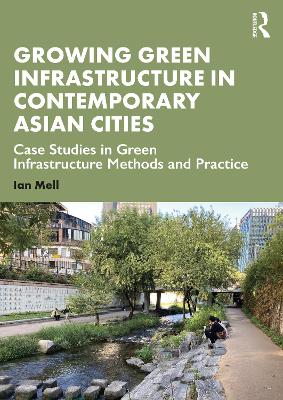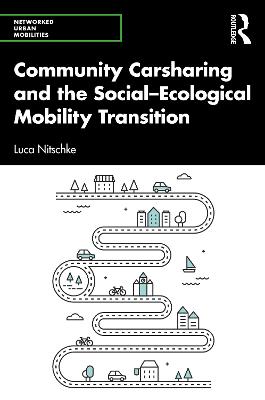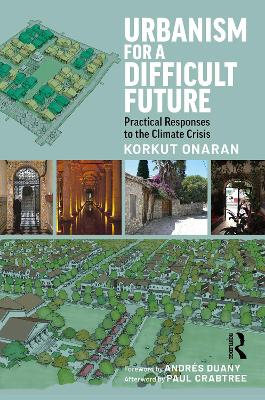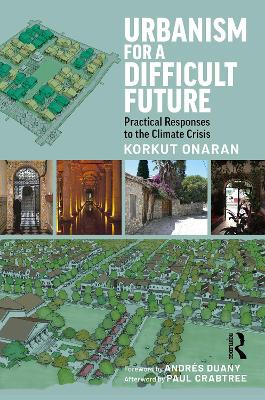New Challenges for Sustainable Urban Mobility: Volume II
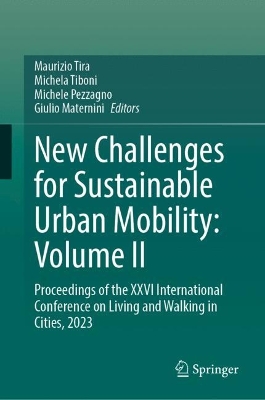 portes grátis
portes grátis
New Challenges for Sustainable Urban Mobility: Volume II
Proceedings of the XXVI International Conference on Living and Walking in Cities, 2023
Tira, Maurizio; Maternini, Giulio; Pezzagno, Michele; Tiboni, Michela
Springer International Publishing AG
10/2024
455
Dura
9783031624773
Pré-lançamento - envio 15 a 20 dias após a sua edição
Descrição não disponível.
Chapter 1: Accessibility Evaluation of Electric Micro-mobility and Public Transport: An Application to the Medium-sized City of Salerno (Italy).- Chapter 2: Which factors contribute to the mobility of persons with physical disabilities? Case study Serbia.- Chapter 3: Accessibility in the metropolitan spatial transition. The case study of Cagliari City (Sardinia, Italy).- Chapter 4: Geo-mining landscape, slow mobility and services in spatial regeneration.- Chapter 5: An Indicator of Walkability for urban districts, oriented towards the MaaS component, with case study of Naples.- Chapter 6: Assessing the Impacts of Urban Regeneration Projects on Smart and Active Mobility. An Application to the Cases of Cesena and Rimini.- Chapter 7: Urban Green Space accessibility as a strategic tool to design Green Infrastructure and pedestrian way.- Chapter 8: Walking accessibility for individuals with reduced mobility: A Sicilian case study.- Chapter 9: The protected areas as accessible walking-destinations: propensity and limits in the Partenio's Park in Campania.- Chapter 10: Sustainable policies and participation for integrated mobility prospects in cities. Case studies in Ligurian Region.- Chapter 11: Nudging walking and cycling in extreme car dependent communities.- Chapter 12: Soft Mobility Knowledge Model: Heavyweight Ontologies.- Chapter 13: Integration between urban and mobility planning in territorial government processes: a case study.- Chapter 14: Survey and monitoring of the mobility in the Parma University Campus for improving sustainable transportation options.- Chapter 15: Sustainable Urban Design Strategies for Pedestrian Oriented Neighborhood: Pozcu, Mersin.- Chapter 16: The process of city logistics supported by regional program: general model and applicative case study.- Chapter 17: Limited Traffic Zones around school for urban mobility supported by regional program.- Chapter 18: Temporal policies to support the urban life system. The desynchronization matrix.- Chapter 19: Preliminary technical analysis of a hyperloop line for freight transport: case study from Italy.- Chapter 20: Sustainable Urban Mobility Plan from European rules to single Country implementation: the study case of Italy.- Chapter 21: May Mobility-as-a-Service lead to more sustainable urban patterns? Examining spatial regenerative potential of mobility integration through MaaS Hub implementation.- Chapter 22: Measuring the impact of institutional and territorial drivers for an efficient and smooth Mobility as a Service (MaaS) implementation: a global analysis.- Chapter 23: Effect of Tram Floor Height on Passenger Boarding and Alighting Time.- Chapter 24: Evidences from cell phone big data applications for urban mobility needs: case studies in Italy.- Chapter 25: Building Origin-Destination matrices in bus networks from Smartphone-App Call Detail Records: Evidence from Italy.- Chapter 26: Parking demand diagnosis by Automated Payment Transaction (APT) data. An application in a small-sized tourist city.- Chapter 27: Sustainable mobility as a factor of urban competitiveness. The scenario of major Italian cities.- Chapter 28: In depth analysis of pedestrian crash trends in the Italian urban environment.- Chapter 29: Risk Index Development for a Safer Cycling Environment.- Chapter 30: A data analysis on road accidents involving pedestrians in urban areas.- Chapter 31: Assessment of the impact of a project on an existing road network through an integrated approach of Road Safety Inspection, Road Safety Audit and Road Safety Impact Assessment.- Chapter 32: An Operating Framework for Assessing Road Safety in a Wide-Road Network with Constrained Time for Action: The Milano-Cortina 2026 Winter Olympic Games Road Case Study.- Chapter 33: Modern preventive tools for improving pedestrian safety in traffic.- Chapter 34: Pedestrian safety in Slovene urban areas.- Chapter 35: Implications of a "road user hierarchy" for road-safety law.- Chapter 36: Road safety analysis: a study on the visual perception of road signs using a driving simulator.
Este título pertence ao(s) assunto(s) indicados(s). Para ver outros títulos clique no assunto desejado.
Transportation systems;Pedestrian safety;Urban regeneration;Conference Proceedings;Urban transit;Cycle mobility;Pedestrian mobility;Public transit;Safe mobility in cities
Chapter 1: Accessibility Evaluation of Electric Micro-mobility and Public Transport: An Application to the Medium-sized City of Salerno (Italy).- Chapter 2: Which factors contribute to the mobility of persons with physical disabilities? Case study Serbia.- Chapter 3: Accessibility in the metropolitan spatial transition. The case study of Cagliari City (Sardinia, Italy).- Chapter 4: Geo-mining landscape, slow mobility and services in spatial regeneration.- Chapter 5: An Indicator of Walkability for urban districts, oriented towards the MaaS component, with case study of Naples.- Chapter 6: Assessing the Impacts of Urban Regeneration Projects on Smart and Active Mobility. An Application to the Cases of Cesena and Rimini.- Chapter 7: Urban Green Space accessibility as a strategic tool to design Green Infrastructure and pedestrian way.- Chapter 8: Walking accessibility for individuals with reduced mobility: A Sicilian case study.- Chapter 9: The protected areas as accessible walking-destinations: propensity and limits in the Partenio's Park in Campania.- Chapter 10: Sustainable policies and participation for integrated mobility prospects in cities. Case studies in Ligurian Region.- Chapter 11: Nudging walking and cycling in extreme car dependent communities.- Chapter 12: Soft Mobility Knowledge Model: Heavyweight Ontologies.- Chapter 13: Integration between urban and mobility planning in territorial government processes: a case study.- Chapter 14: Survey and monitoring of the mobility in the Parma University Campus for improving sustainable transportation options.- Chapter 15: Sustainable Urban Design Strategies for Pedestrian Oriented Neighborhood: Pozcu, Mersin.- Chapter 16: The process of city logistics supported by regional program: general model and applicative case study.- Chapter 17: Limited Traffic Zones around school for urban mobility supported by regional program.- Chapter 18: Temporal policies to support the urban life system. The desynchronization matrix.- Chapter 19: Preliminary technical analysis of a hyperloop line for freight transport: case study from Italy.- Chapter 20: Sustainable Urban Mobility Plan from European rules to single Country implementation: the study case of Italy.- Chapter 21: May Mobility-as-a-Service lead to more sustainable urban patterns? Examining spatial regenerative potential of mobility integration through MaaS Hub implementation.- Chapter 22: Measuring the impact of institutional and territorial drivers for an efficient and smooth Mobility as a Service (MaaS) implementation: a global analysis.- Chapter 23: Effect of Tram Floor Height on Passenger Boarding and Alighting Time.- Chapter 24: Evidences from cell phone big data applications for urban mobility needs: case studies in Italy.- Chapter 25: Building Origin-Destination matrices in bus networks from Smartphone-App Call Detail Records: Evidence from Italy.- Chapter 26: Parking demand diagnosis by Automated Payment Transaction (APT) data. An application in a small-sized tourist city.- Chapter 27: Sustainable mobility as a factor of urban competitiveness. The scenario of major Italian cities.- Chapter 28: In depth analysis of pedestrian crash trends in the Italian urban environment.- Chapter 29: Risk Index Development for a Safer Cycling Environment.- Chapter 30: A data analysis on road accidents involving pedestrians in urban areas.- Chapter 31: Assessment of the impact of a project on an existing road network through an integrated approach of Road Safety Inspection, Road Safety Audit and Road Safety Impact Assessment.- Chapter 32: An Operating Framework for Assessing Road Safety in a Wide-Road Network with Constrained Time for Action: The Milano-Cortina 2026 Winter Olympic Games Road Case Study.- Chapter 33: Modern preventive tools for improving pedestrian safety in traffic.- Chapter 34: Pedestrian safety in Slovene urban areas.- Chapter 35: Implications of a "road user hierarchy" for road-safety law.- Chapter 36: Road safety analysis: a study on the visual perception of road signs using a driving simulator.
Este título pertence ao(s) assunto(s) indicados(s). Para ver outros títulos clique no assunto desejado.



